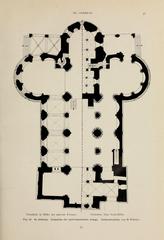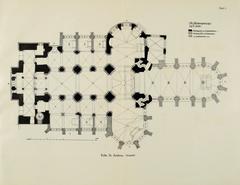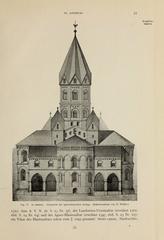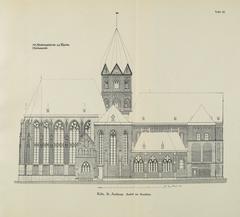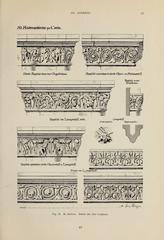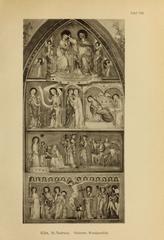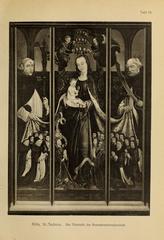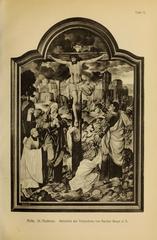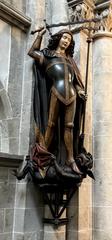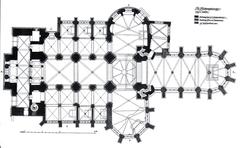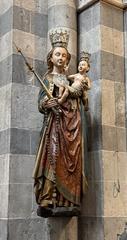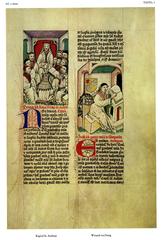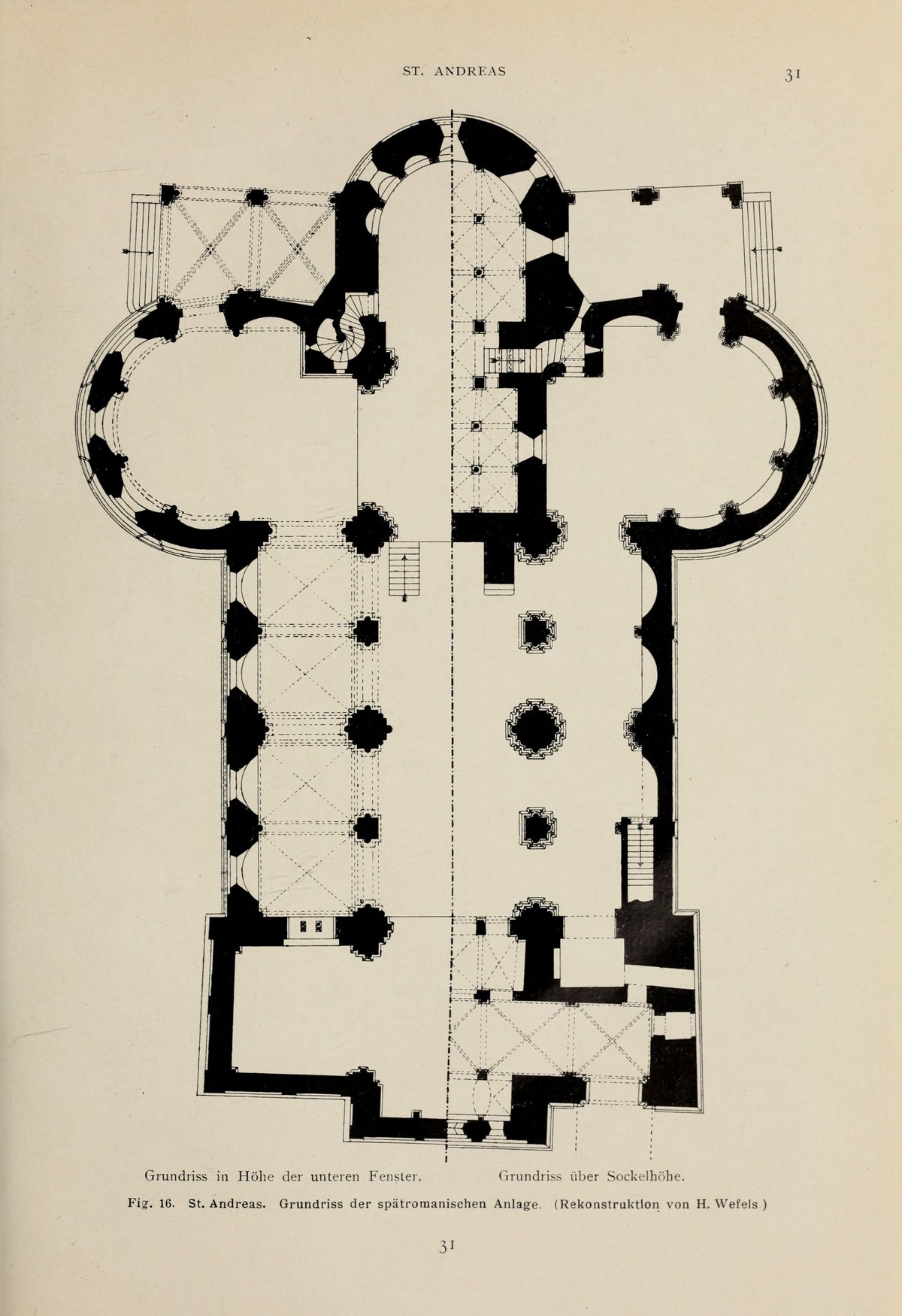
Visiting St. Andreas Church, Cologne: Tickets, Hours, History & Travel Tips
Date: 14/06/2025
Introduction
St. Andreas Church stands as one of Cologne’s great Romanesque treasures, offering visitors a unique journey through more than a thousand years of religious, architectural, and cultural evolution. Nestled in the heart of Cologne’s Old Town, just steps from the iconic Cologne Cathedral, St. Andreas blends Romanesque solidity with Gothic elegance and modern artistic interventions, making it an essential stop for history enthusiasts, architecture lovers, and spiritual seekers alike. This comprehensive guide will provide you with everything you need to know for a memorable visit—including the church’s fascinating history, architectural highlights, practical visitor information, and helpful travel tips (SpottingHistory, Medium, katholisch-in-koeln.de, culturethemes.com).
Historical Overview
Early Foundations and Roman Origins
St. Andreas Church is built on a site of deep historical and spiritual significance, with evidence of Christian worship dating back to the early centuries of Cologne. Archaeological finds, including a 3rd-century Roman sarcophagus displayed in the crypt, underscore the location’s sacred use even during Roman times (SpottingHistory). Before the current Romanesque structure, an early Christian chapel known as St. Matthew’s at the Moat stood here, reflecting Cologne’s status as a major Roman and later medieval settlement (Medium).
Romanesque Construction and Medieval Expansion
The formal foundation of St. Andreas dates to 974 CE under Archbishop Gero. The current late Romanesque basilica was primarily constructed between 1200 and 1240, featuring a classic three-aisled pillar design, massive columns, and a robust tower at the crossing (katholisch-in-koeln.de). In the 13th century, the eastern choir was replaced by an elongated Gothic choir, inspired by Aachen Cathedral, giving the church its distinctive blend of Romanesque and Gothic elements (cwshier.com).
Further Gothic additions include side chapels, a reconstructed southern transept, and the Rosary Chapel, added in 1539. The resulting architectural ensemble is unique among Cologne’s Romanesque churches, with transepts ending in vestibules rather than apses and a choir longer than the nave.
The Crypt and the Legacy of St. Albertus Magnus
A highlight for visitors is the crypt, which preserves parts of the original 10th-century structure and houses the tomb of St. Albertus Magnus—a 13th-century Dominican theologian, philosopher, and Doctor of the Church. His relics, interred in a 3rd-century Roman sarcophagus, have made St. Andreas a renowned pilgrimage site (thecatholictravelguide.com). The crypt’s low vaults and sturdy columns provide a tangible link to the church’s earliest days (cwshier.com).
Relics and Shrines
St. Andreas is also home to significant relics. The Gothic choir apse contains a reliquary believed to contain St. Andrew’s arm bone, while the south transept houses a gilded 16th-century reliquary with the bones of the seven Maccabean brothers and their mother, acquired after the closure of local monasteries during French occupation (katholisch-in-koeln.de). The “Fountain of Blood,” a 16th-century font in the vestibule, is associated with the martyrs of St. Ursula (cwshier.com).
Artistic Heritage and Modern Interventions
St. Andreas features a wealth of Romanesque and Gothic architectural details, including massive pillars, rounded and pointed arches, ribbed vaulting, and medieval frescoes. Modern stained-glass windows by Markus Lüpertz introduce contemporary artistry, creating a vibrant interplay of color and light within the historic nave (cologne-tourism.com).
Restoration and Preservation
The church has endured and recovered from various hardships, including fires, religious upheaval during the Reformation, and damage from World War II bombings. Restoration in the 19th and 20th centuries revived its medieval character by removing Baroque elements and carefully repairing war damage (katholisch-in-koeln.de). Since 1947, the Dominican Order has overseen its pastoral and cultural activities, ensuring the church remains both a place of worship and a living monument.
Visitor Information
Location and Getting There
St. Andreas Church is centrally located in Cologne’s Altstadt-Nord (Old Town North) at Komödienstraße 6-8, 50667 Köln, Germany. It is easily accessible on foot from Cologne Cathedral and Köln Hauptbahnhof (main train station). Public transport, including trams and buses, serves the area. Several public parking garages are nearby, though parking in the city center is limited and can be costly.
Visiting Hours
- Monday–Saturday: 10:00–18:00
- Sunday and Public Holidays: 13:00–17:00
Hours may vary on special occasions or for liturgical events. Always check the official parish website or the Cologne tourism portal for any updates.
Tickets and Admission
- Admission: Free for all visitors. Donations are encouraged to support the church’s preservation and community activities.
Guided Tours
- Availability: Guided tours (usually in German; English available upon request or via third parties) can be arranged through the parish office or DOMFORUM.
- Duration: 45–60 minutes
- Group Size: Up to 20 people
- Cost: Free or donation-based; small fees may apply for private tours
- Self-Guided Visits: Multilingual brochures are available at the entrance.
Accessibility
- Wheelchair Access: Main entrance and nave are accessible via ramp. Some historic areas, including the crypt, may not be fully accessible due to steps and uneven flooring.
- Facilities: Accessible restrooms are located nearby but not always within the church itself. Contact the parish office ahead of time to arrange specific needs.
Dress Code and Etiquette
- Dress modestly (cover shoulders and knees); hats should be removed inside.
- Photography is permitted without flash or tripods, but not during services or where posted.
- Maintain silence and set mobile phones to silent mode.
- Food, drink, and smoking are not allowed inside.
What to See at St. Andreas Church
- Nave and Columns: Admire the massive Romanesque pillars and rhythmic arches.
- Gothic Choir: Experience the soaring spaces and ribbed vaulting of the choir, longer than the nave itself.
- Crypt: Visit the tomb of St. Albertus Magnus and view the ancient Roman sarcophagus.
- Relics and Shrines: See the reliquaries of St. Andrew and the Maccabean martyrs, and the Fountain of Blood.
- Stained Glass: Marvel at both medieval and contemporary Lüpertz windows.
- Artistic Details: Explore chapels, the baroque pulpit, and the church’s medieval frescoes and sculptures.
Nearby Attractions and Itineraries
Combine your visit to St. Andreas with other major Cologne historical sites:
- Cologne Cathedral (Kölner Dom): UNESCO World Heritage Gothic masterpiece (official site)
- St. Gereon’s Basilica: Famous for its unique decagonal dome
- St. Ursula’s Basilica: Home to the Golden Chamber and relics
- Roman-Germanic Museum: Explore Cologne’s Roman heritage
- Museum Ludwig: Modern and contemporary art museum
For walking tours, use apps like GPSmyCity.
Practical Tips for Your Visit
- Best Times: Weekday mornings or late afternoons are quieter. Services and religious holidays are busier.
- Language: Most signage is in German; English brochures are available.
- Weather: The church interior is cool year-round; bring a light sweater if needed.
- Donations: Consider supporting the church’s preservation with a donation.
- Luggage Storage: Not available on site; use facilities at Köln Hauptbahnhof or Cologne Cathedral luggage storage.
Frequently Asked Questions (FAQ)
Q: What are the current visiting hours of St. Andreas Church?
A: Generally Monday–Saturday 10:00–18:00, Sunday/Public Holidays 13:00–17:00. Check the official parish website for updates.
Q: Is there an entrance fee or do I need tickets?
A: Admission is free; donations are appreciated.
Q: Are guided tours available?
A: Yes—free or donation-based, with private tours possibly incurring a small fee. Book in advance, especially in peak seasons.
Q: Is St. Andreas Church accessible to wheelchair users?
A: The main entrance and nave are accessible, though the crypt and some chapels have steps.
Q: Can I take photos inside?
A: Yes, but without flash or tripods, and not during services.
Summary and Recommendations
St. Andreas Church is a must-see destination for anyone visiting Cologne. Its combination of Romanesque architecture, Gothic artistry, and spiritual legacy—anchored by the tomb of St. Albertus Magnus—creates a profound experience for visitors. Free admission, accessible location, and the option for guided tours make it easy to include in any Cologne itinerary. Its proximity to other landmarks and the tranquil ambiance set it apart from busier attractions like Cologne Cathedral.
Plan your visit today, check the latest information online, and consider downloading the Audiala app for guided audio tours and insider tips. For deeper engagement, explore Cologne’s other Romanesque churches and museums, and follow local cultural pages on social media for news and events.
Sources and Further Reading
- SpottingHistory: St. Andrews Church, Cologne
- Medium: Romanesque Cologne
- Germany Travel Blog: Cologne Cathedral and Surroundings
- katholisch-in-koeln.de: St. Andreas Church Overview
- thecatholictravelguide.com: Saint Andrew & Tomb of Saint Albertus Magnus
- culturethemes.com: Churches in Cologne
- touristplatform.com: Historical Cathedrals in Cologne
- cwshier.com: Dominikanerkirche St Andreas Köln
- cologne-tourism.com: St. Andreas Church
- mygermanyvacation.com: Things to Do in Cologne
